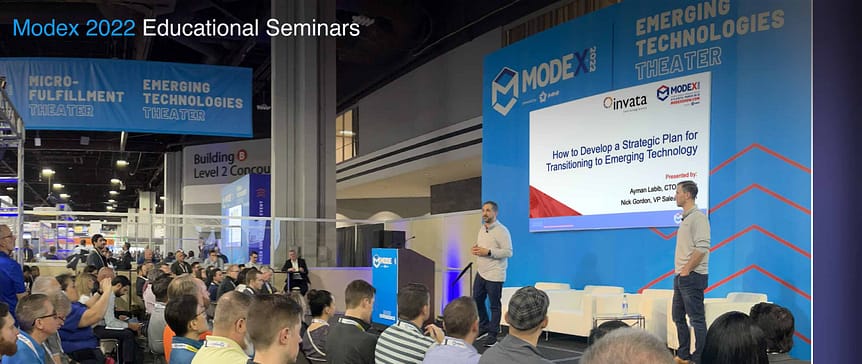Thinking about transitioning to emerging technology, but unsure about how and where to begin the process of incorporating robotics into your operation?
If so, you’re not alone. In fact, at MODEX in late March of this year, there were close to 90 attendees to an educational seminar we put on who were looking for answers to the same question.
Our answer to those attendees was that there’s no simple answer, but there are steps you can take to ensure you adopt an approach that best fits your unique company needs.
We outlined those steps in our seminar, which you can now view here anytime.
What’s in it for you?
This seminar will walk you through the process some of the world’s leading companies have used for incorporating automation into their fulfillment and returns operations. And in the process, it will provide you with the basis to formulate your own strategic plan for ensuring you get the solution best suited for your unique business.
If you’re considering emerging technology, but have been unsure how or where to begin the process, then this is the seminar for you!
Viewing Options:
You can review the seminar below in two ways.
1) Either slide by slide with accompanying abbreviated text below.
Or 2) Listen to the 27-minute recording of the actual seminar as provided by MHI found at the end of this post.
Emerging Technology Educational Seminar Slide Deck:
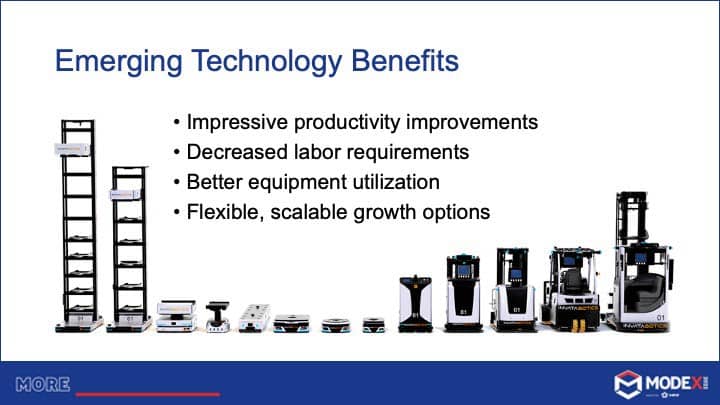
From a productivity perspective, when we incorporate emerging tech into our automation solutions, we’re seeing efficiencies previously not possible prior to the emergence of robotics. The results favorably impact the bottom line of the clients incorporating the technology in their operations via lowered cost-of-goods sold, reduction in CapEx and OpEx spending, lower labor costs, and a new level of flexibility in the way they can approach fulfillment and distribution automation.
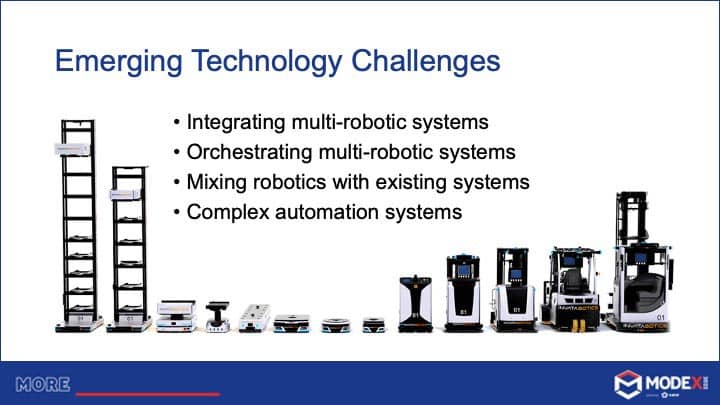
There is a sea of one-off robotic solutions out there aimed at tackling one aspect of your fulfillment or distribution challenges, but they aren’t geared for complex automation environments requiring lots of layers of automation. And the challenge facing many adapters today is in integrating and orchestrating heterogeneous robotic solutions in the same automation solution.
Managing traffic flow and task allocation for multi-robotic systems is a massive challenge. One that has more to do with software than robotic hardware.
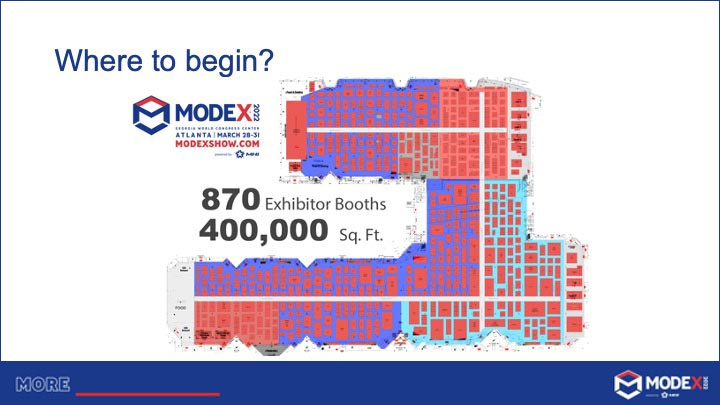
Whether at MODEX where 870 exhibitors are crammed into the equivalent of 7 football fields of show floor, or trying to find provider partners in the field, it’s easy to be overwhelmed at the magnitude of options out there.
Here is the process some of the world’s leading companies have used for incorporating automation into their fulfillment and returns operations — broken down into 12 steps.
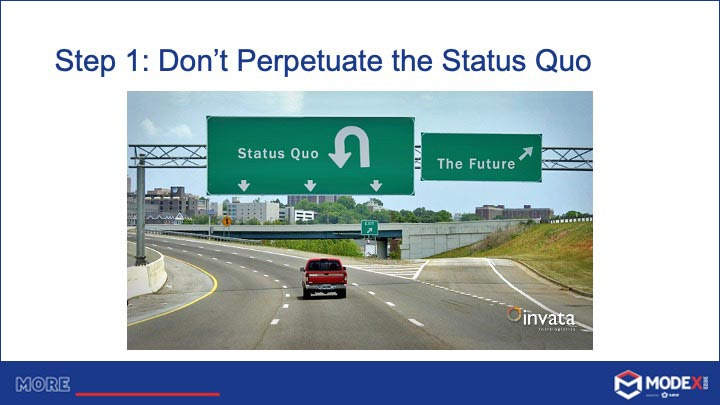
Step one is recognizing that the status quo won’t get you where you need to go. Given the increasing and seemingly ceaseless velocity of change in the supply chain industry, it’s the ability to adapt to change that will be the critical differentiator for businesses as they either succeed or fail to evolve in the future. Achieving the kind of flexibility needed to maintain your competitive edge is what’s needed.
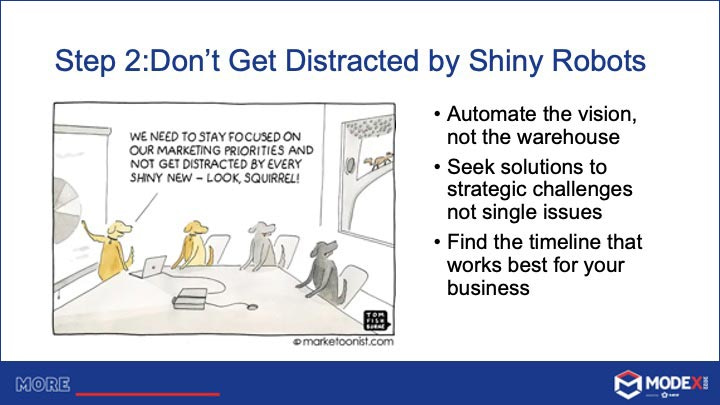
Too many companies begin their automation process by thinking about robotics when they should be thinking about objectives. Focus on the vision you have for your business and align your warehouse with that. Think about the strategic challenges you face as a company and seek out comprehensive solutions to tackle them.
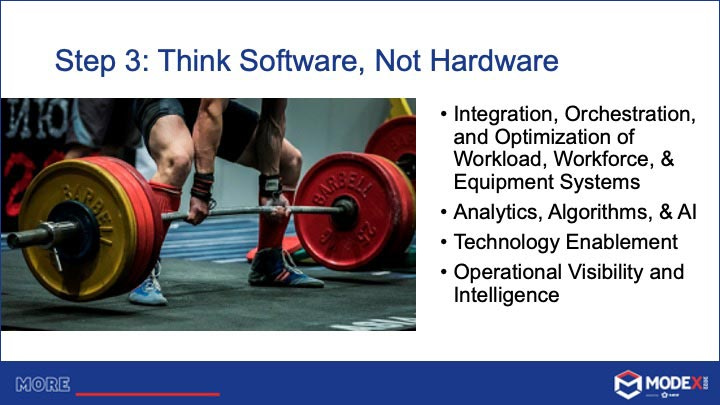
Robotics may provide a flexible means for moving heavy objects, but it’s the software running the robotics that does the real heavy lifting.
Three things to keep top of mind in any automation effort should be integration, orchestration, and optimization. That’s what will provide the strategic edge needed to be a market leader. And that comes directly from the software side of the equation. So start there. Learn about what a provider’s software can offer in terms of incorporating heterogeneous robotics and traditional technologies into one complex automation environment. Optimization is the name of the game and the enemy to optimization is disparate systems requiring multiple layers of disparate software.
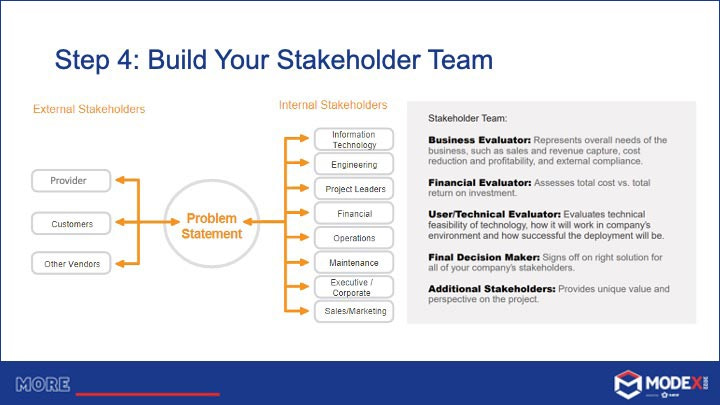
Having a strong internal project team is paramount to building a successful emerging tech project. Without it, many projects will be derailed as key affected stakeholders who were left out of initial, siloed decisions bring up critical objections that can set a project back to square one. It’s better to build your stakeholder team early, mutually define the challenge in a problem statement, and address internal objections in a manner that moves the project forward. Follow this formula, and you’ll be happy you did the work up front versus doing it twice.

The secrets buried in your company data are the key to developing the best solution for your business’ unique challenges.
The right provider will offer a meticulous solution development process of computerized data preparation, data synthesis (the creation of future state data — what you’ll be doing in 7 years), and the simulation modeling that will guide the solution development process and algorithm development.
When you’re considering a provider, learn about their process. Understand what they offer. And find out what kind of custom tools they use. Is their process automated? Do they have the kind of solutions development process that rapidly tests multiple solutions, iterates options using variable inputs, and fully addresses your unique needs?
If the provider that is automating your process doesn’t have an automated process of their own, then they may not be the right provider for what you hope to achieve.
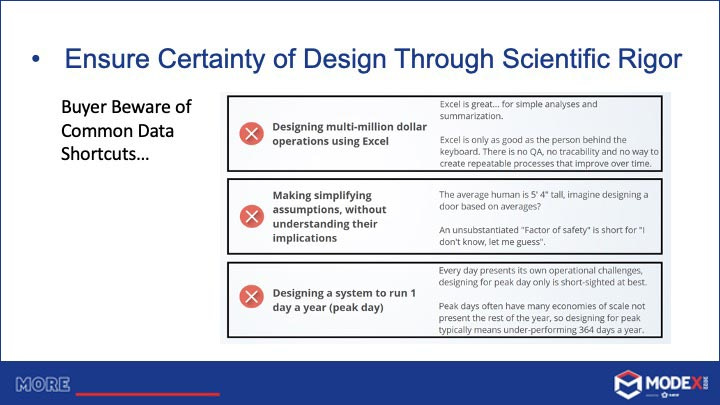
Meticulous, computerized data preparation is crucial to successful analytics outcomes. Manual data preparation (i.e. the spreadsheet), on the other hand, has been shown to lead to inaccurate assumptions and errors in logic that can seriously compromise the analytics process. If you’re investing millions in new technology, you can’t rely on spreadsheet math to get you to a solution. It’s a great starting point to know your total transactional volumes, but you’ve got to dig into the granular detail of your data. There are unintended consequences if you don’t. So make sure you’re working with someone who can get to that level of scientific rigor.
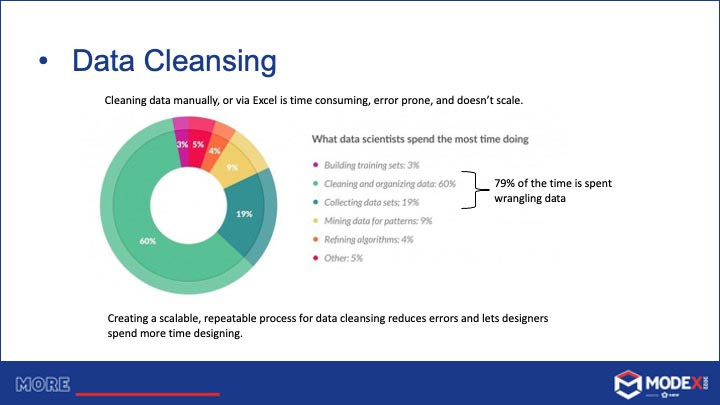
Your data will only guide you to a strategic solution if it is prepared in a way that supports and empowers the analytics process. That’s why data cleansing (aka wrangling data) is not only the slowest part of starting a design process, but also one of the most crucial.
Being able to iterate and adjust the data very quickly in an organized manner that transparently accounts for all assumptions and/or incorrect and missing data is key to getting the outcome you seek.
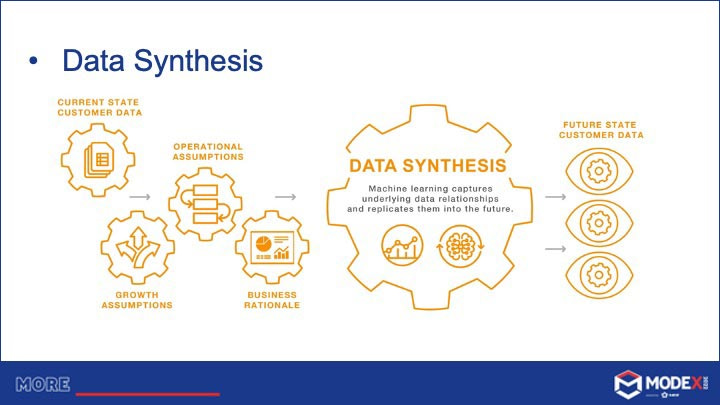
Future state data provides the basis for future state modeling and as such is crucial to determining how any proposed solution will perform against your business’ future operational requirements.
It requires a sophisticated data synthesis process that merges your current state data with a variety of potential growth scenarios, operational assumptions, and rationale specific to your business, and then employs machine learning to capture underlying relationships within your current data and replicate them into the future. The key here is ensuring the future state data holds the same characteristics and integrity as the current data. It’s the hardest part and the part that matters most.
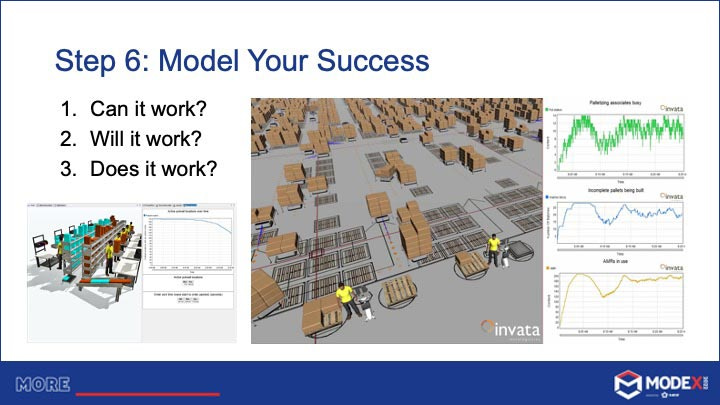
When done right, computer simulation modeling provides a virtual environment in which design ideas can be rapidly tested, discretely analyzed, iterated, refined, and proven out — all before a single piece of equipment is purchased or bolted to the warehouse floor.
The process not only enables in-depth learning in a risk-free virtual environment, it also enables a much smoother, more reliable go-live process, while providing answers to critical questions that can be used to make better informed decisions.
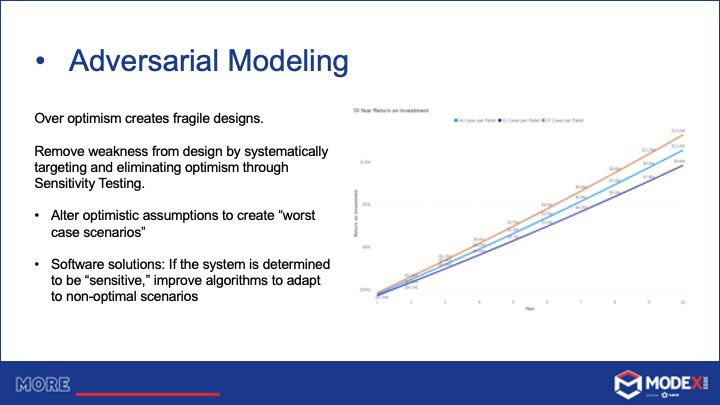
Adversarial modeling is designed to test the sensitivity of the proposed system through iterations of varying inputs. Thousands of models can be simulated concurrently to determine the optimum outcome for any given scenario. In the process, weak points can be addressed and refined to ensure a robust, flexible system.
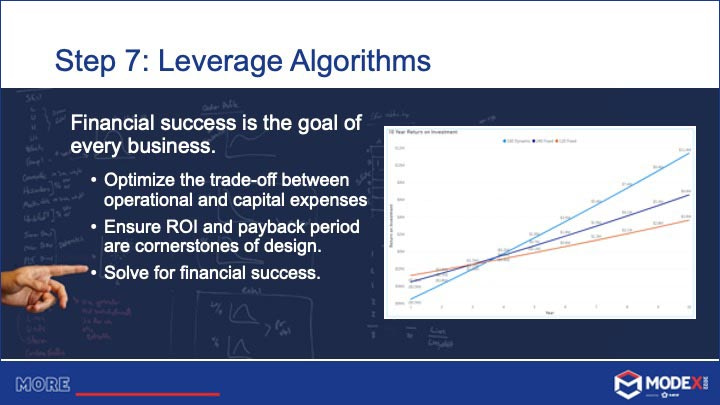
Emerging technology will provide a key asset for enhancing fulfillment and distribution efficiencies, but the greatest returns you’ll realize will be directly tied to the algorithms in your system software. The right provider will help you to leverage your algorithm assets to adapt to wider swings in demand, accommodate future changes in business models, and achieve the success you want.
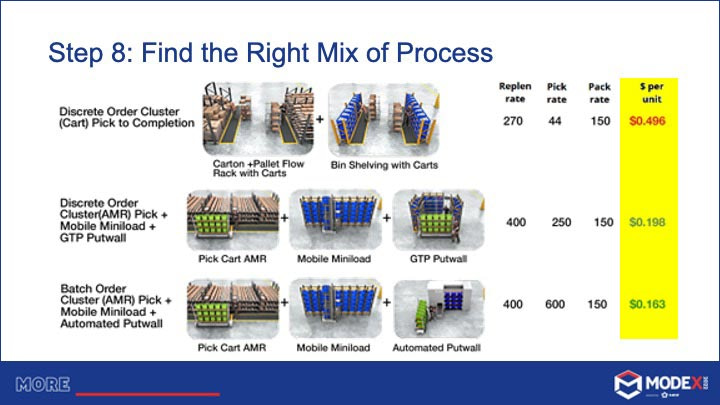
Your product line will determine the mix of processes and emerging and traditional technologies that will work best for your company. The key is to find a provider that can orchestrate the mix that works best for your business by ensuring the lowest cost per unit. Computer simulation modeling plays a critical role providing the insights needed to justify product mix combined with software process. Without it, you’re relying on your provider’s best opinion.
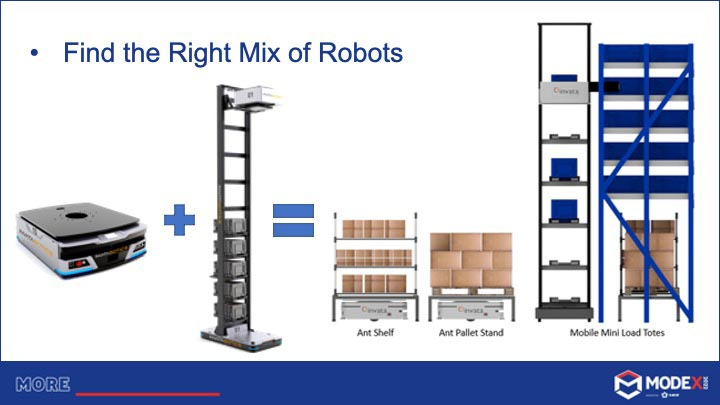
Unless you have a one-size fits all product, then finding the right mix of robotics for your operation will be critical to outcomes. Depending on the velocity and characteristics of your products, different storage medium will likely be necessary as will differing means of transportation to maximize efficiency.
This is where the ability to combine heterogeneous robotics into the same system can make a huge difference in the order fulfillment process. For one global retailer we are using mixed technology robotics along with mixed technology storage approaches to enable fulfillment of both conveyable and non-conveyable products in the same order.
Thanks to this mix, what had previously required separate handling processes, is now combined into one.

Finding out how invested your would-be provider is in the solution development process will tell you a lot about their dedication to delivering quality solutions. Do they take an automated approach to automation, for example? And how serious are they about developing tools to deliver not just the best overall solution, but the greatest level of efficiency at each stage of the process?
As an example of this, we’ve recently developed a layout parser that working directly from a CAD design will automate and iterate route layout, logic, and process planning for our robotics technology. The ability to quickly iterate this process not only enables extensive testing to ensure the most efficient approach, but also allows for experimentation with improvement ideas.
The right provider will have a solution development process meticulously designed around the criteria that matter most to its clients: solution performance.
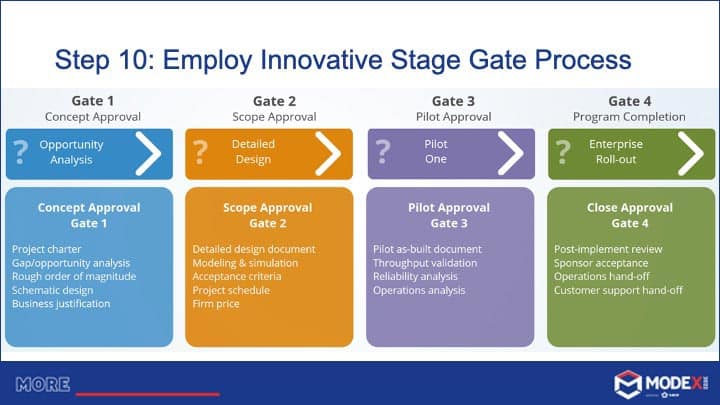
A stage gate process is a simple four-step process that can help companies smooth the way to adopting new technology. It allows for a graduated approach to gaining consensus from various stakeholders in an organization while it helps build demonstrable proof of the benefits to be gained from a commitment to emerging technology. By the end of the process, a concept can be adopted and rolled out enterprise-wide.
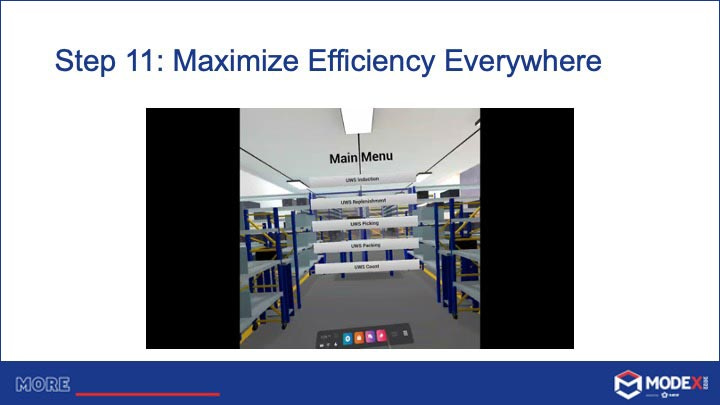
Even after an automation solution has been implemented, there are additional ways to maximize efficiencies. Training is one of them — especially for micro-fulfillment facilities where space is always at a premium.
For one of our global retail clients, we knew employee training on a new goods-to-person micro-fulfillment operation could put a strain on the efficiency of the GTP stations, so we designed a series of virtual reality training modules to train new workers without taking the actual equipment out of commission.
The right provider will seek out creative ways to enhance systems efficiency at every turn.
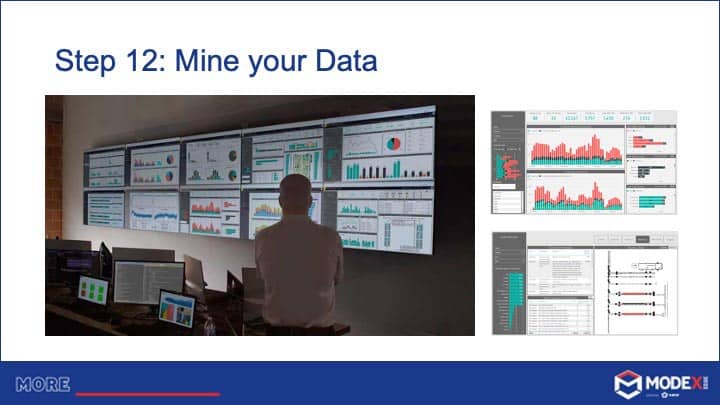
Your new automation system will provide a treasure trove of data you can use to continuously analyze and improve your operation. Use the business intelligence provided by your automation system to continuously improve operational efficiencies and enhance your strategic advantage.
A good provider can help you understand not only which KPI’s are important to monitor, but other ways to watch for trends and analyze the information your system will give you.
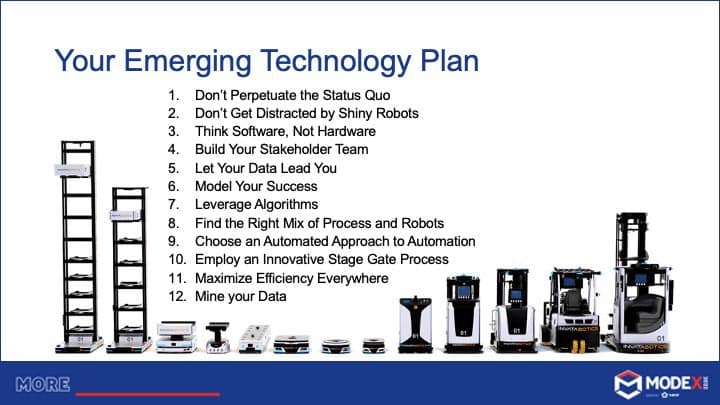
Use these twelve steps to create a strategic plan for transitioning to the emerging technology that best fits your company’s unique business requirements.
If you’re in the market for assistance, we’d be happy to help.
Original Educational Seminar as Seen @ MODEX
Speakers: Ayman Labib, Chief Technology Officer MSI Automate and Nick Gordon, Vice President Sales MSI Automate.
Walter High is VP Marketing at MSI Automate, where he has worked since 2012.

